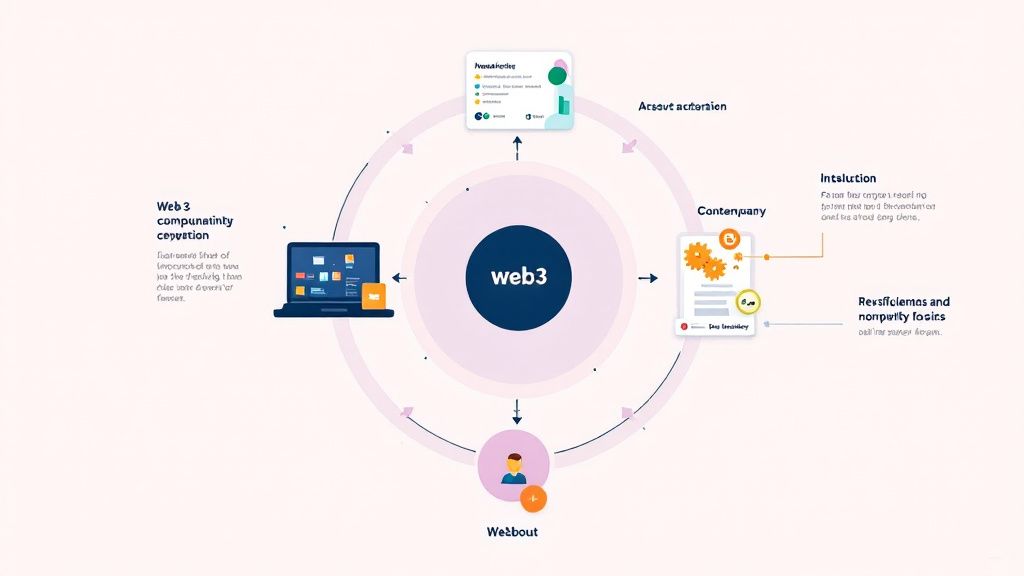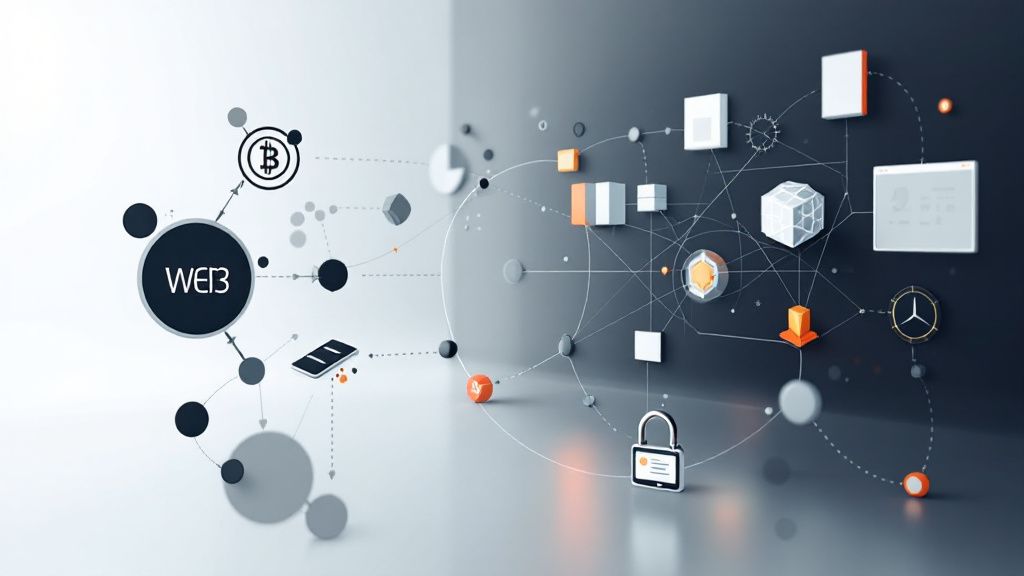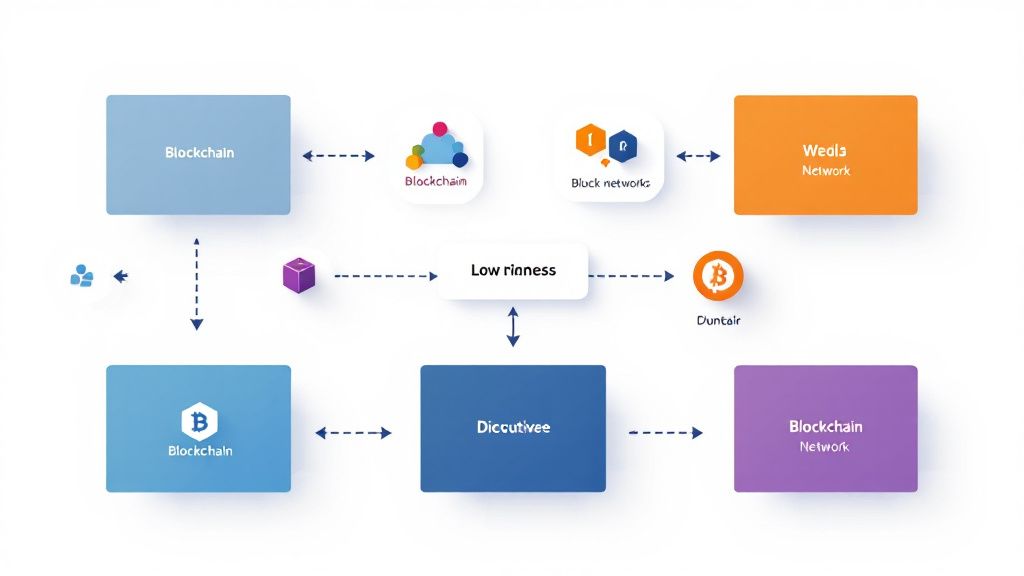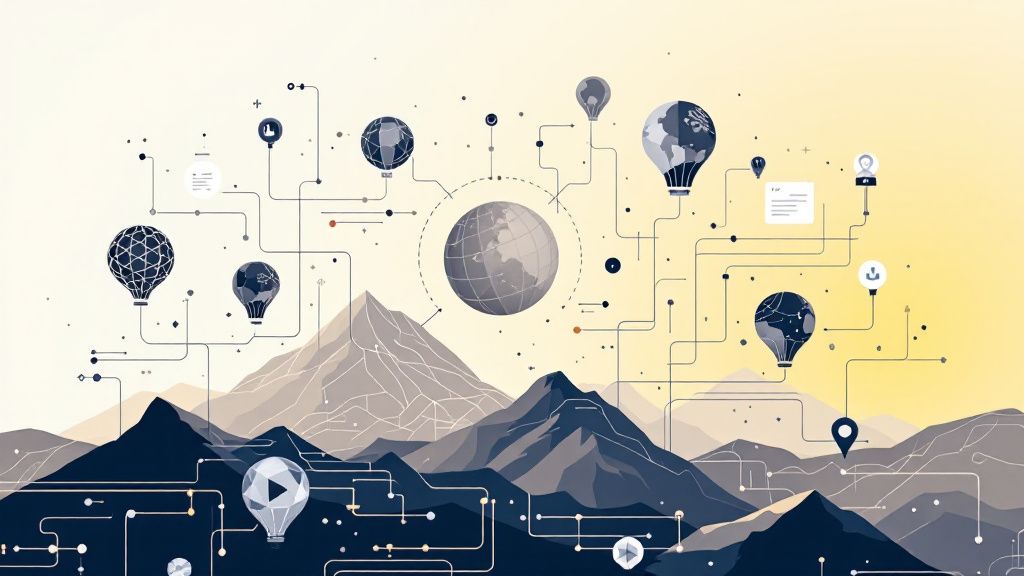Exploring the Revolution of Web3
Imagine a digital world where you have more control over your online identity and assets. This is the promise of Web3, an evolution from the traditional internet, aiming to decentralize control and bring transparency to online interactions. Web3 technology uses blockchain to empower you with secure and direct transactions, cutting out intermediaries. As you explore Web3 projects, you discover new opportunities in sectors from finance to art, reshaping how you interact with the digital space. Web3 development focuses on creating applications that give you sovereignty over your data, marking a shift towards a more user-centric internet landscape.

Understanding the Basics of Web3
Web3 encapsulates a transformative shift from the conventional internet towards a decentralized model. In this realm, you experience increased autonomy as Web3 technology empowers individuals rather than centralized entities. With distributed ledgers like blockchain, data is no longer housed in monopolized servers, thus providing security and transparency like never before.
Decentralization is key to Web3 development, where there's an emphasis on peer-to-peer interactions. This approach starkly contrasts the existing model where data passes through a centralized server. Here, you have the potential to engage directly with others, fostering a level of trust and reliability that enables innovative web3 projects to thrive.
Web3 projects enhance your interaction with digital tools. On one hand, proponents see this development as a way to democratize the web by redistributing power. Opponents, however, argue it could lead to new complexities, such as scalability and regulatory challenges. This duality presents a rich landscape for exploration and growth, inviting you to weigh each side's perspective.
As you delve deeper into the basics of Web3, it becomes clear that it's more than just a technological overhaul. It's a cultural shift toward a more personalized and secure digital existence, offering tools that promise to redefine your interaction with the internet.

Blockchain and Its Role in Web3
Blockchain serves as the backbone of Web3, providing the essential infrastructure that allows decentralization to thrive. It facilitates secure peer-to-peer transactions without the need for intermediaries, empowering you to engage directly with others on the web. This transformative technology underpins many web3 projects, ensuring trust and transparency across various digital interactions.
In the context of Web3 development, blockchain is pivotal in creating applications that decentralize control and enhance data security. Think of blockchain as the digital equivalent of a public ledger. Just like a register records transactions without bias, it maintains integrity and reliability because each transaction is recorded in an unalterable and transparent manner.
Web3 technology leverages blockchain to allow you more control over your digital identity and assets. By eliminating the centralized authority model, blockchain redistributes power to end-users, providing a more equitable digital experience. This level of autonomy and security is a hallmark of innovative web3 projects that aim to transform traditional online frameworks.
As you explore the vast potential of Web3, it's clear that blockchain's role is fundamental. Serving as both a technological framework and a catalyst for change, blockchain opens up new pathways for digital interaction, prompting continual evolution and empowerment in the internet landscape.

Smart Contracts: The Backbone of Web3 Applications
Smart contracts are revolutionizing the way you interact with Web3 applications by automating digital agreements. These self-executing contracts operate on blockchain technology, ensuring transactions are processed transparently and without intermediaries. As a result, web3 projects benefit from increased efficiency and reduced costs, accentuating the innovative nature of Web3 development.
Looking at smart contracts through the lens of automation, we can see that they reduce human error and heighten trust. These digital agreements execute automatically when predetermined conditions are met, streamlining processes across various sectors. By embedding terms directly into the code, you experience a seamless, automated interaction that elevates the capabilities of web3 technology.
In the world of decentralized finance and beyond, smart contracts are crucial. They enable complex financial transactions without the need for central authority, allowing for innovative web3 projects that challenge traditional financial systems. You are at the forefront of experiencing a system where trust is algorithmically enforced, opening new avenues for business and creativity.
As smart contracts continue to evolve, you're witnessing the backbone of Web3 applications reshaping interactions across industries. Their ability to automate and secure agreements paves the way for more efficient and inclusive digital ecosystems, highlighting the dynamic potential of Web3 development.

Interoperability in Web3
Interoperability is a cornerstone of Web3, enabling different blockchain networks to communicate with one another. This capability allows you to move assets and data seamlessly across various platforms, enhancing your digital experience. The goal is to create a unified web where applications and services work harmoniously, propelling the growth and evolution of web3 projects.
Comparing interoperability versus isolated systems reveals the advantages of connected networks. While traditional systems often operate in silos, limiting collaboration and efficiency, interoperable Web3 technology provides a seamless flow of information and resources. This interconnectedness fosters innovation and inclusivity, allowing you to benefit from a diverse array of web3 development opportunities.
As you engage with Web3 applications, interoperability not only enhances convenience but also boosts security and flexibility. It enables cross-chain collaborations that expand the possibilities of what web3 projects can achieve. By embracing interoperability, you're part of a movement that seeks to break down barriers, leading to a more cohesive and efficient digital ecosystem where the entire Web3 community thrives.

The Emergence of Decentralized Applications (dApps)
Decentralized applications, or dApps, are redefining your interaction with the internet by eliminating centralized servers. These applications run on blockchain networks, ensuring that no single entity has control, which enhances security and transparency. dApps are a critical part of web3 projects, driving innovation in finance, gaming, social media, and more. Web3 technology supports these applications, providing a robust framework for their development and implementation.
Tracing its evolution from the inception of blockchain technology in the early 2000s to today's robust ecosystem, dApps have grown remarkably and continue to push boundaries. Originally limited to simple transactions, they now support complex functionalities, reflecting the growth trajectory of web3 development. This evolution opens up possibilities for creating more user-centric applications that give you greater control over your digital experiences.
The rise of dApps is also closely tied to the community-driven ethos of Web3. These applications empower you to participate in governance decisions and contribute to network updates, fostering a sense of ownership. The decentralization offered by dApps represents a cultural shift towards a more equitable digital landscape, where your voice plays a pivotal role in shaping the future of the internet.
As you explore dApps, you become part of a technological and cultural revolution that emphasizes decentralized control and participatory governance. The advent of dApps has democratized access to digital services, creating opportunities for innovation and collaboration within the Web3 ecosystem. This landscape provides new ways for you to engage, transact, and innovate, driven by the core principles of transparency and community involvement that define the Web3 journey.

Web3's Impact on Digital Identity
Web3 is revolutionizing digital identity by shifting control from centralized entities to individuals like you. In the traditional model, your online identity is often controlled by platforms and third parties, posing privacy and security risks. Web3 technology, however, allows you to own and control your digital identity, safeguarding your personal data across the internet without reliance on gatekeepers.
A powerful feature of Web3 development is self-sovereign identity. This system lets you manage your identity using blockchain technology, enabling secure and private authentication processes. Self-sovereign identity eliminates the need for multiple login credentials, thus reducing vulnerability to data breaches and enhancing your online security and privacy.
For example, in the financial industry, projects like uPort have been at the forefront of enabling users to prove their identity without centralized verification. This reduces fraud while providing a seamless and secure user experience. Such examples highlight how Web3 projects are driving innovation and reshaping the way digital identities are managed across various sectors.
Web3 projects are also introducing decentralized identifiers, which allow you to connect with services without sharing sensitive information unnecessarily. This approach facilitates interactions underpinned by trust, essential in an increasingly digital world. By enabling you to control what information to share and with whom, it respects your privacy preferences.
As Web3 continues to advance, the impact on digital identity is profound. The control placed in your hands creates a more resilient digital environment, enhancing your autonomy and security. As a participant in this new ecosystem, you are helping to forge a future where digital interactions are secure, private, and aligned with your preferences.


.jpg)

.jpg)
.webp)
.webp)
.webp)


.svg)









